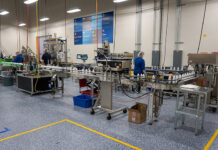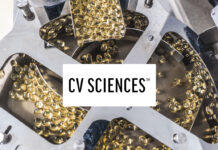Nutritional Therapeutics Inc. says that clinical trials have shown that their product, NT Factor®, can actually support the repair of damaged cell membranes – in effect reducing the cells’ biological age and restoring mitochondrial ability to generate energy. They say this is true whether the reduced energy/fatigue is from an illness like ME/CFS or fibromyalgia, a side effect of chemotherapy, or simply a result of aging. Studies done with severely fatigued patients in each of these populations demonstrated that NT Factor can support reduction of fatigue levels by as much as 45 percent.
John Casey, president of Nutritional Therapeutics, envisioned NT Factor as a bridge between the healthier diet of old and today’s modern diet. He determined that the fundamental problem with the modern diet is that it leads to leaky-gut syndrome, candidiasis (yeast overgrowth), and other gastrointestinal problems, which in turn hinder the proper absorption and utilization of nutrients. In his search for a way to correct this problem, he looked to nature – and so, mother’s milk became the blueprint for developing NT Factor.
An important component of mother’s milk is phosphoglycolipids (also called glycophospholipids). Phosphoglycolipids are a special type of fat and they make up a significant portion of the structure of cell membranes.
But those phosphoglycolipids need a hospitable environment in the stomach and GI tract in order to be utilized properly. So, in addition to being a rich source of phosphoglycolipids, NT Factor was also formulated to provide both:
- The friendly bacteria (bifido and lactobacillus bacterium) needed to keep the gastrointestinal tract functioning properly,Researchers found that NT Factor also supports the repair of cell membranes – not just in the gastrointestinal tract, but throughout the whole body.The NT Factor formulation is designed so that the phosphoglycolipids match the human cell membrane and are not digested but instead are able to get into the wall of the GI tract intact. Once there, they go to work repairing any damage in the cell membrane.
As we get older or develop various illnesses, oxidative stress producesfree radicalswhich destroy cell membrane, literally causing holes in our cells. The cell membrane is composed mainly of fats with some protein. When the phosphoglycolipids in NT Factor get to the cell membrane, they fill in and plug any holes. This enables the cell to once again function as it is meant to.
Phosphoglycolipids have their own energy supply, each containing a battery-like structure with a positive and negative charge. Because of this, when this type of lipid is laid against a cell membrane, it naturally forces itself into the membrane. Therefore, phosphoglycolipids require none of the patient’s energy to get into the body – an important feature for individuals who are already severely fatigued.
- Once phosphoglycolipids get into the body, they work to repair the cells in the lining of the stomach and the GI tract.Since the cell membrane is the gateway of all nutrition and the production site for enzymes, energy, proteins, hormones, etc., repairing the cell membrane sets the stage for everything else in the body to function better.
When a person experiences chronic fatigue, whether it’s due to an illness, a side effect of cancer treatment, or aging, the mitochondria are only operating at 40 to 60 percent of capacity. There is not enough energy left to drive all of the important functions needed – which can include thinking, movement, muscular activity and other necessary activities.
Mitochondria are like little batteries within our cells that provide the energy our bodies need. With ME/CFS, fibromyalgia and other neurodegenerative diseases, the mitochondrial membrane is damaged, which causes it to leak. When the mitochondria become leaky, they cannot generate energy because a very important component of that energy-driving system is that the membranes provide insulation for the mitochondria. A good comparison is the insulation surrounding a battery. If you take the insulation off of the battery, it runs down very quickly. The same thing happens with the mitochondria.
Mitochondria are made up of an inner and outer membrane. The inner membrane is where food, water and oxygen are converted to adenosine triphosphate (ATP), which supplies energy to all your cells. It’s also where the free radicals that drive aging and illness are produced. As the phosphoglycolipids in NT Factor are pushed into the mitochondria to repair the membrane, the production of free radicals that damage the membrane is slowed down or stopped. Thus, phosphoglycolipids optimize the mitochondria’s ability to produce energy.
The ability of the NT Factor phosphoglycolipids to support repair of mitochondrial membrane damage was visually demonstrated in a 2003 study. The mitochondria of patients with moderately severe fatigue were isolated and fed a fluorescent dye called Rhodomine-123. The healthier the cell, the more dye it would take up and the brighter it would light up. On day one, the mitochondria luminosity was poor but after taking NT Factor for 60 days, it was brightly lit up, indicating that the mitochondria has been repaired.(3)
Multiple tests done with both moderately and severely fatigued patients have shown that NT Factor can support reduction of fatigue by as much as 45 percent and increases in mitochondrial function of 35 percent.(1, 3-5)
In 2010, the Journal of the American Nutraceutical Association published a study in which 67 participants with chronic fatigue took NT Factor with a B-vitamin complex for one week. After just that one week, their fatigue already had been reduced by an average of 36.8%.








